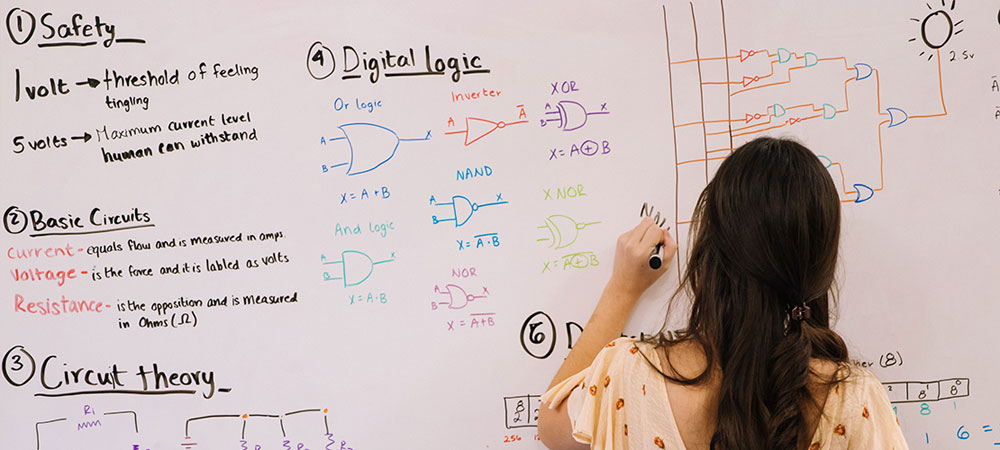One of the most important parts of STEM is that it provides the skills and knowledge for industry evolution. This subject specifically looks at how technology will change and how this is going to affect particular sectors, job roles and society.
Everything you need to know about STEM education
August 4, 2023
By Annie Everill
Adapting to the demands of the future
Critical thinking and problem-solving
By encouraging students to approach challenges head-on with a systemic mindset, STEM emphasises critical thinking, problem-solving and analytical thinking. This prepares students for the real world and can encourage a more simple, rational approach to any issues they face.
Creativity and innovation
STEM education promotes and emphasises creative thinking by encouraging students to explore, experiment and think outside the box. Each subject contains an element of innovation in the aspects of inventing, designing and creating, skills which can lead to great success in the future.

Diversity and inclusivity
This particular subject aims to promote diversity and inclusivity by providing equal opportunities for students from all backgrounds, religions, cultures and genders.
Driving economic growth
The subjects and areas covered within STEM are at the forefront of economic growth and can lead to some of the most successful careers. By investing in this subject, students can cultivate a skilled approach and prepare themselves for the most affluent paths in life.
How can STEM education shape the future?
STEM education has the power to shape the future in profound ways. Ranging from scientific discoveries to sustainability, here are some of the key ways in which STEM could shape the future.
- Technological advancements
- Solving complex issues and problems
- Innovation and entrepreneurship
- Advanced scientific research
- Promoting sustainable development
- Global collaboration
- AI and automation
In a world driven by a constant stream of technological advancements and scientific discoveries, the significance of STEM has never been more pronounced.
In this blog, we delve into the intricacies of STEM education, exploring its impact on individuals, career prospects, and the wider society. Whether you are a teacher, student, or someone passionate about the areas, this blog is a platform for you to engage, learn, and be inspired.
What is STEM education?
STEM education is a dynamic and multidisciplinary approach to learning that equips students, scholars and researchers with the knowledge, skills, and mindset needed in our modern world. Inspiring inquisitiveness and critical thinking, STEM education promotes problem-solving, creativity and collaborative working.
Unlike traditional classroom learning, STEM education goes beyond isolated teaching. This subject encourages students and readers to apply their knowledge and skills to real-life situations, opening their eyes to how to world is progressing.

What does STEM stand for in education?
STEM education ( science, technology, engineering and mathematics) is not limited to a distinguishing age group or academic level. It can be incorporated at different stages, from early childhood through to university. The goal is to inspire and prepare pupils to become critical thinkers, lifelong learners, and future innovators.
Science: Encouraging scientific investigation and knowledge through observation, experimentation, and data analysis.
Technology: Studying the tools, resources, and applications of technology, including computer programming, coding, digital literacy, and the use of software such as CAD.
Engineering: Engages students in designing, building, and testing prototypes, while also considering constraints, efficiency, and sustainability to design and create products. This could include projects such as tool design, mould making or automotive manufacturing.
Mathematics: Developing mathematical reasoning, logical thinking, and quantitative skills through problem-solving, data, modelling, and real-world scenarios.

Why is stem education important?
The four elements of STEM are some of the most sought-after skills found throughout a variety of industries and professions. This adaptable and flexible subject equips individuals with the relevant skills, mindset and knowledge required to succeed in a technology-driven world, preparing them to be active contributors.
